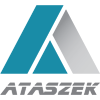UV adhesives
What are UV adhesives? UV adhesives, that is cured with UVA light, are currently the best method of bonding glass to glass and glass to metals and other materials. The connection is strong, durable and aesthetic. Further pros and cons below. How does a light-curing adhesive work? The principle is simple - inside the product there are so-called photo-initiators that disintegrate under the influence of an appropriate light wave (more below), releasing the activator - in simplified terms, the second component of the adhesive. How and with what do we cure such adhesives? To be able to cure in a uniform and reproducible way, a UV lamp is needed with the range for the given adhesive. Currently, the most commonly used is the UVA range, i.e. ultraviolet light in the range of about 320-410nm and most importantly of the appropriate power for a given surface and product. The adhesives use a rather upper range from about 350-360 upwards. In order to correctly determine how much light of this power needs to be obtained on the surface, first we check the technical data sheet and these will be mW units. per cm2. e.g. 5-7 and marked for what period of time, i.e. 10-15s. - such a "portion" of light of a given range must accept the surface of the glue in order to properly stick together. These are not high powers, but it should be remembered that on the way we have surfaces that will more or less block this light and this should be taken into account. With exposure, you can not overdo it. For example, when the glue cures in 10 seconds and we glow 30 seconds - nothing will happen. Can it be cured with sunlight? - it's also UV light. Theoretically yes, in practice it is a questionable way, because you have no control over how much time you need to illuminate (once it is sunny and sometimes cloudy) and there is no repeatability of the process. What we glue with these adhesives: glass (and it is not an easy material to glue due to its hygroscopicity), transparent plastics with other materials such as: metals, wood, stone - ceramics, etc. other surfaces. Advantages: transparency - often perfect as glass, adhesive strength - with proper density selection, aesthetics after gluing, speed of making joints - with the use of strong lamps, curing can only take 5 seconds. and even less, the durability of the connection over time, resistance to water and other chemicals. Disadvantages: price - compared to a gram, such adhesives are expensive, but we use them between surfaces where the glue itself is e.g. 0.1 mm and there is basically no loss, so in the end result and taking into account the above advantages, this minus is not end disadvantage. the need for a UV lamp - this was a minus until recently due to the expensive filament lamps with a service life of only 500h. Currently, with LED lamps for PLN 200-300, we can cure all materials within a maximum of 30 seconds, and in special cases up to 1 minute (more in the UV lamps category). Types of UV adhesives. The most common adhesives are acrylic or methacrylic base and we have such adhesives only in our offer. However, there may also be other bases that few know about, such as cyanoacrylate or epoxy. These adhesives can be light-cured, although used very rarely due to the possibility of replacing them with other products. Remember to use protective glasses and clothing when exposing, and do not shine directly in the eyes!









